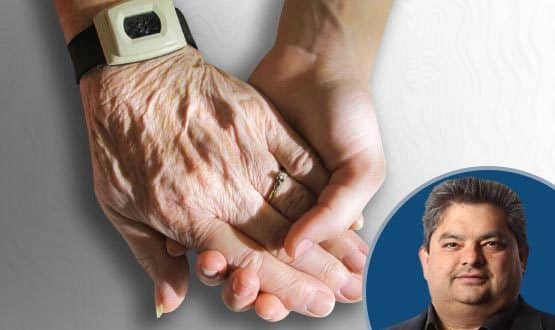General Medical Services GP practices are paid roughly £76 per weighted head of population to look after their patients – plus some other monies for collecting points on the Quality and Outcomes Framework and smaller sums for additional services.
This income, minus costs, is then divided by the number of partners and is our “pay”. Hence GPs are very sensitive to the amount of income that comes in; and to the cost of delivering care.
Some say this is why British general practice is the most efficient in the world; some say it’s a shame the politicians don’t state this a bit more.
As a Personal Medical Services practice we are having money taken away from us to reduce our core funding to £76 per patient. This is happening even though NHS England agrees we deliver more than a GMS practice; but they don’t want to commission for that (what do we stop?)
This wouldn’t be so bad if the funding from one area to another for additional services was the same, but it’s not. Some areas appear to have a lot more discretionary money than others to invest.
A lot of freight in ‘weighted population’
However, today I’m more bothered about this core funding. The key point in that sentence is “weighted population”.
As a practice, your actual list size is put through a formula that creates your weighted list size. This formula was designed in 2004 and is called the Carr-Hill formula. It was revised in 2007 and is hopefully being revised again.
This formula makes a huge difference to the amount of money a practice may get. Even two practices not that far from each other, looking after different groups of patients (for example one more deprived and the other more elderly) will get different amounts of money.
The original formula was meant to take into account socio-demographic factors including age, sex, list turnover and other factors around patient care.
Data was taken from the GPRD general practice research database on consultations between 1999 and 2002 as the basis for real activity undertaken.
In 2007, further analysis was done using the QResearch database, which modified the formula slightly. Both the GPRD and QResearch databases are big; but they are based on practices that have agreed to upload their data.
I’m not clear how this biases the data; but I’m sure it must have some kind of impact. Now there are voices calling for the formula to be revised, there are claims that deprivation isn’t taken sufficiently into account.
I’m not sure I know the truth about this – and I’m not sure if the people arguing this are saying that a change is needed to reflect the real work that needs to be done to look after a more deprived population, or whether they are saying more resources should be directed to deprivation to reduce the health inequalities gap.
While the latter is worthy, it’s a different issue. I think there is a real need to revisit the formula, but I believe the elephant in the room is less deprivation weighting than ‘has the level of income kept up with the increase in the amount of work done?’
What massive pay increase?
There is this myth that GPs have had a huge pay rise. This dates back to 2004, when yes we got a decent pay rise. For most of the last ten years we have had below inflationary income rises so, effectively, pay cut after pay cut.
Given that practices are going to the wall and GPs are retiring faster than ever (though raiding our pension scheme contributes to that and recruitment is poor) it would be interesting to know if practices are, indeed, being asked to work harder and harder for less and less. Or is that another myth?
Well, our local GP federation has been working with Edenbridge Healthcare to develop a BI dashboard for primary care. It’s starting to show some interesting figures. Perhaps we haven’t yet done the statistical analysis that the previously mentioned groups have done, but the early data is making me concerned.
Our toolkit gets into our clinical system and pulls out appointment data, demographics and disease area on patients seen. It’s a work in progress and is only in beta at the moment.
The dashboard is aimed at practices that want to look at their capacity, their activity and their demand, to help them plan better and understand what it is they are all doing. However, we have already pulled some interesting data from the past ten years – that is, from just after the last review of Carr-Hill – and it shows things are going up faster and faster and not just in a straight line.
Locally, our collective list size has gone up quite a bit; reflecting a growing population. This in itself shouldn’t be a problem the formulas use list size.
However, at the same time, the average age of the population has gone up to new record highs. With this, the number of co-morbidities has also gone up. So it’s therefore not surprising that the rate at which patients present has also increased.
Ageing is the real issue
Graphs of consultations are just upward lines. Graphs of age of number of attendances per patient per year are also upward lines. And there is clear data that as you get older you need more and more care.
This is clearly shown at 75 and even more so at 85. I’m personally not convinced this level of increased care with age is matched by underfunding of deprivation. I think the elderly are our biggest “problem” in terms of need and demand.
Nursing home work care is going up, chronic disease care is going up all the time, there are newer drugs, more tests, and more expectations.
Interestingly, the number of GP appointments seems to plateau about 18 months ago. At first (and again, I haven’t done any rigorous analysis yet, this is anecdote level stuff for the moment) I wondered if the demand was settling.
Now (with the same caveats) I think it is switching. We appear to have run out of GPs appointments – over the past few years the only way to cope with more demand appears to be more phone calls. While there will be a coding issue, the graph is almost of a space rocket going into orbit.
So, in short, from the data I have, I’m not convinced the formula takes into account the real ageing effect on demand for primary health care. I’m also worried that our negotiators have let our income fall behind our workload.
 | Dr Neil PaulDr Neil Paul is a full time partner at Sandbach GPs; a large (22,000 patient) practice in semi-rural Cheshire. He is also one of the directors of Howbeck Healthcare Ltd. |  |

